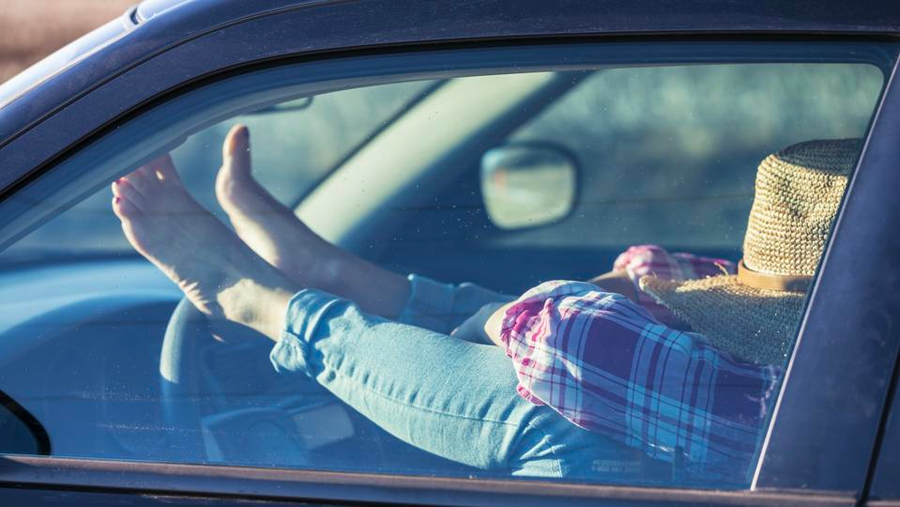Have you ever been told it’s illegal to drive barefoot? It’s a surprisingly common question across the United States, and the answer might surprise you. There’s a widespread misconception that driving without shoes is against the law. This myth has persisted for decades, likely due to safety concerns and well-meaning advice from parents or loved ones.
This article dives into the specifics of Washington State. We’ll explore the legality of barefoot driving in 2024, address safety considerations, and offer recommendations for safe driving practices regardless of footwear.
Legality of Barefoot Driving in Washington
Let’s clear the air first: there is no law in Washington State that specifically prohibits driving barefoot. The Washington State Department of Transportation (WSDOT) confirms this on their website [source: WA State Department of Transportation (.gov) website on driver safety]. Their focus lies on ensuring safe driving practices, and footwear choices fall outside the scope of specific regulations.
This aligns with the national trend. A man named Jason Heimbaugh famously wrote to all 50 state DMVs in the 1990s, and all confirmed the legality of barefoot driving [source: The Zebra – Is driving barefoot illegal in your state?].
While Washington doesn’t have a law against it, the WSDOT emphasizes the importance of maintaining control of your vehicle. This means ensuring you’re comfortable and have a good feel for the pedals.
Safety Concerns Regarding Barefoot Driving
There are valid safety concerns regarding driving barefoot. Here are some of the key points to consider:
- Reduced Feel for Pedals: Without shoes, you might have less feel for the pedals, especially for delicate maneuvers like braking or accelerating smoothly. This can lead to delayed reactions or unintended movements.
- Difficulty in Quick Maneuvers: In an emergency situation, you might need to react quickly. Bare feet might struggle to maintain proper grip on the pedals, hindering your ability to perform maneuvers like swerving or quick braking.
- Potential for Foot Slippage: There’s a chance your foot could slip off the pedal, especially if the car’s interior is wet or if the pedals are slick. This can lead to a complete loss of control for a crucial moment.
- Distracted Driving Due to Discomfort: Barefoot driving can be uncomfortable, especially on long journeys. This discomfort can become a distraction, taking your focus away from the road.
- Anecdotal Evidence of Accidents: While not conclusive evidence, some anecdotal reports suggest potential links between barefoot driving and accidents. However, it’s important to note that these reports often lack details about other contributing factors.
Recommendations for Safe Driving (Even with Shoes On)
Even though barefoot driving isn’t illegal, safety should always be the top priority. Here are some recommendations for safe driving, regardless of your footwear choice:
- Proper Footwear Selection: Choose shoes with good grip and a comfortable fit. Avoid sandals, flip-flops, or shoes with loose soles that could slip off.
- Adjust Seats and Pedals: Make sure your seat is positioned for optimal control. You should be able to comfortably reach and press the pedals with your entire foot.
- Practice Emergency Maneuvers: Regularly practice emergency maneuvers like braking and swerving in a safe, controlled environment. This will help you build muscle memory and react more effectively in real-world situations.
- Avoid Distractions: Distracted driving is a major cause of accidents. Put your phone away, avoid eating or drinking while driving, and minimize conversations with passengers. Keep your focus on the road.
Conclusion
In Washington State, and most parts of the United States, driving barefoot isn’t illegal in 2024. However, this doesn’t mean it’s the safest practice. The potential safety concerns, like reduced feel for pedals and difficulty with maneuvers, are important to consider.
Here are some additional points to ponder:
- Insurance and Liability: While barefoot driving itself might not be illegal, some insurance companies might use it as a contributing factor to deny a claim in case of an accident. This is because it could be seen as negligence on the driver’s part.
- Law Enforcement Discretion: Even though there’s no specific law against barefoot driving, police officers have wide discretion when pulling someone over for erratic or unsafe driving. Barefoot driving, if it contributes to the unsafe behavior, could be a reason for a traffic stop.
Making Informed Choices: Safety First
The decision of whether or not to drive barefoot ultimately comes down to personal choice. However, it’s crucial to prioritize safety. Consider the potential downsides and make an informed decision.
If you do choose to drive barefoot, ensure your comfort level doesn’t compromise your control of the vehicle. For most people, wearing shoes with good grip is the safer option.
Beyond Washington: Looking at the National Landscape
While this article focused on Washington State, the legal situation regarding barefoot driving is similar across the country. There are no federal laws against it, and most states don’t have specific regulations either. However, some states, like Arkansas and Montana, have recommendations against the practice in their driver’s manuals [source: The Zebra – Is driving barefoot illegal in your state?].
Looking Ahead: Potential for Future Legislation?
There hasn’t been any significant movement towards legislation banning barefoot driving in recent years. However, the safety concerns remain a topic of discussion. If there’s a rise in accidents with evidence linking them to barefoot driving, it’s possible future legislation might be introduced.
The Bottom Line: Prioritize Safety Over Convenience
Barefoot driving might feel comfortable and convenient in certain situations. But when it comes to operating a motor vehicle, safety should always be the top priority. Consider the potential risks and choose footwear that allows you to maintain optimal control of your car. By making informed decisions and practicing safe driving habits, you can minimize risks and ensure a smooth journey on Washington’s roads.



